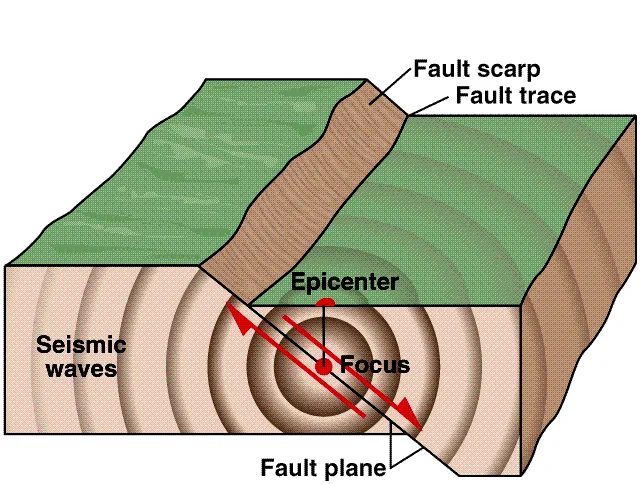Earthquakes, the powerful and often devastating geological phenomena, have captivated human curiosity for centuries. These natural disasters, resulting from the sudden release of energy in the Earth’s crust, leave profound impacts on communities, landscapes, and lives. Let’s delve into the science behind earthquakes, their origins, regions prone to seismic activity, early warning signs, and crucial safety measures.
Table of Contents

Also read: Understanding Avalanches: Science, Risks, and Safety Measures
The Science Behind Earthquakes:
At the heart of earthquakes lies the Earth’s lithosphere, a rigid outer layer, and the asthenosphere, a semi-fluid layer beneath it. The Earth’s tectonic plates, vast slabs of rock, constantly move, albeit very slowly. When these plates interact—colliding, sliding past, or pulling away from each other—stress builds up along fault lines, causing the ground to rupture and release accumulated energy. This sudden release generates seismic waves that propagate through the Earth, resulting in the shaking we perceive as an earthquake.
Origin and Prone Areas:
Earthquakes are not random; they occur predominantly along tectonic plate boundaries. The Pacific Ring of Fire, encircling the Pacific Ocean, is particularly active due to the presence of multiple tectonic plates. Other regions, like the Himalayan belt, experience seismic activity due to the collision of the Indian and Eurasian plates.

Early Signs of Earthquakes:
While earthquakes can strike without warning, certain precursors may provide clues. These include:
1. Foreshocks: Minor tremors that precede a larger earthquake.
2. Unusual Animal Behavior: Animals may exhibit erratic behavior before seismic activity.
3. Changes in Groundwater Levels: Anomalies in well water levels may signal an impending quake.
4. Earthquake Lights: Rare luminous phenomena in the sky before or during an earthquake.
Despite these indicators, reliable prediction remains a challenge, making preparedness crucial.
Safety Measures:
1. Build to Withstand: Constructing earthquake-resistant buildings with flexible foundations and reinforced structures is vital.
2. Emergency Kits: Prepare emergency kits with essentials such as water, non-perishable food, first aid supplies, and important documents.
3. Educate and Drill: Communities should conduct regular earthquake drills to ensure everyone knows how to respond swiftly and safely.
4. Secure Heavy Items: Fasten heavy furniture, appliances, and other objects to prevent them from becoming hazards during shaking.
5. Emergency Contacts: Establish a communication plan with family and friends, including designated meeting points.
Conclusion:
Earthquakes, a potent force shaping the Earth’s landscape, demand respect and preparedness. While their occurrence remains unpredictable, understanding the science behind earthquakes, recognizing prone areas, being vigilant for early signs, and adopting safety measures can significantly mitigate the impact of these natural disasters. As communities continue to coexist with the ever-moving Earth, fostering awareness and resilience remains the key to minimizing the toll of seismic events.
Join our WhatsApp channel for the latest science updates, here.
Image source: Google




